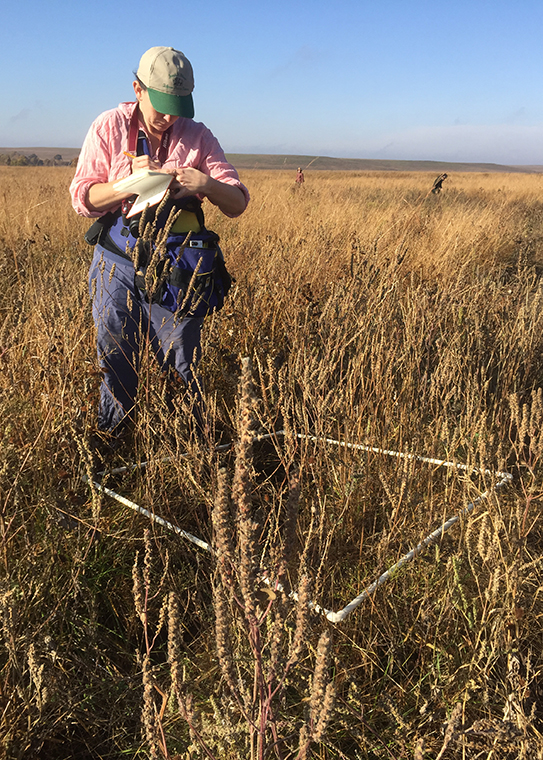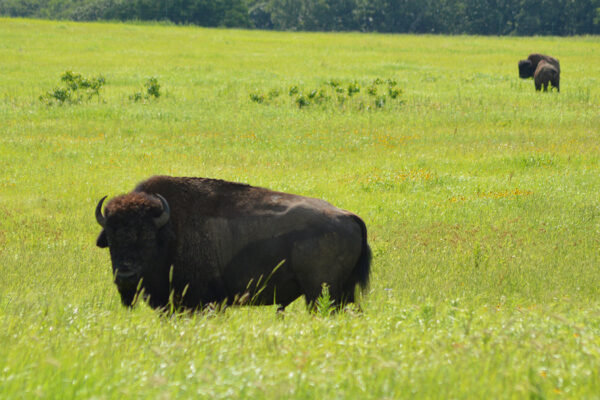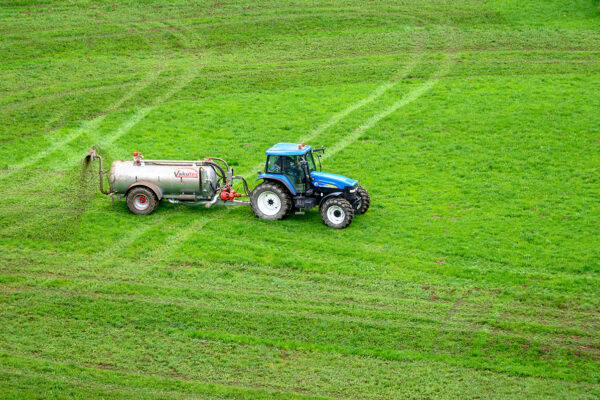Schoolchildren in America learn the story of the “three sisters” in agriculture: how Indigenous peoples planted corn, beans and squash in the same plots because these plants thrive together better than when they are planted alone.

It’s a true story, but it’s not the complete history of early agriculture in the Americas. Maize (corn), beans and Mexican varieties of squash (such as pumpkins) were not widely grown in eastern North America until the last few centuries before the arrival of Europeans, beginning around 900 AD. In fact, agriculture began in this region thousands of years earlier. Indigenous peoples in eastern North America domesticated a diverse group of annual crops, many of which fell out of cultivation around the time of European colonization.
Natalie Mueller, an expert on agrobiodiversity and an assistant professor of archaeology in Arts & Sciences at Washington University in St. Louis, studies these older crops.
In a new paper published May 15 in Phil. Trans. B, Mueller reviews the history of the native eastern North American crops and explains how this “sleeping” agricultural system could become a source of alternative crops and methods in an era of rapid climate change. Here, she answers some questions about her research.
Scientists used to call the crops that you study “lost crops.” But you have recently started referring to them as “sleeping” crops instead. Why?
I can’t take credit for the idea of replacing “lost” with ‘”sleeping” — the members of the St. Louis Native American Women’s Care Circle suggested it to me years ago at an event in Granite City. We were trying some delicious dishes made with the seeds of goosefoot, sumpweed and knotweed — three of the lost crops. They pointed out that ‘lost crops’ had kind of an Indiana Jones vibe and evoked this colonial myth that Indigenous cultures and people were extinct. This was also the first of many times that I have spoken to Indigenous growers and seed keepers who consider seeds to be living beings that are sleeping or waiting for their human kin to pick up their side of the relationship and plant them. This is a common thread in the Indigenous food and seed sovereignty movements of eastern North America, which are rapidly growing.
In light of this renaissance, I don’t think it’s far-fetched to consider the broader ancient agricultural systems and crops of this region as sleeping, rather than lost. With the right combination of will, knowledge, access to land and resources, these agro-ecosystems could be reawakened.
What types of crops are you talking about?
The native crops of eastern North America that are still widely grown are squashes and sunflowers. The sleeping crops are probably known to most people as weeds: little barley, maygrass, sumpweed, goosefoot and knotweed. You can still find these plants growing on the landscape, but people stopped cultivating them hundreds of years ago, and their domesticated varieties are extinct. As cool as they are, I think we’ve maybe focused a bit too much on these particular crops.
Part of the argument that I am making in this paper is that the ancient agricultural system in eastern North America was actually even more diverse, and it included managed perennial plants in forests, wetlands and prairies, too. Many of these “wild” or “foraged” foods are very culturally important to Indigenous communities today.

Why should we be thinking about reawakening these older crops and methods of food production now?
The methods of ancient Indigenous farmers in eastern North America provide an alternative to the stark choice between maximizing food production and protecting biodiversity: They did both. There are various ways that the crops and techniques that were part of this system could be integrated into contemporary food production.
For example, with climate change predicted to increase flood frequency and intensity in the Midwestern United States, it will be increasingly difficult to protect floodplain fields from floods of higher severity that occur less predictably. Cultivating wetland or floodplain-adapted crops instead of industrial corn and soy could be a low-input way out of this trap.
How can today’s scientists and agriculture leaders engage with the descendants of the people who cared for these crops in the past?
In other regions, historical ecologists have worked closely with local and Indigenous communities to understand the landscapes they study — in some cases, with explicitly activist agendas of restoring access to, or control over, ancestral homelands. This has generally not been true in eastern North America.
However, I can think of a few research projects that stand out as successes. For example, the Rivercane Restoration Alliance is a collaboration between the U.S. Army Corps of Engineers, the Nature Conservancy and tribal nations to conduct multidisciplinary research and facilitate restoration projects that increase access to this cultural keystone species. In a region where many tribes were forcibly removed, I think a major challenge is finding ways to provide access to lands or resources in ancestral homelands to communities who today live far away.
How is your lab at WashU helping to awaken the sleeping crops?
My own lab has taken small steps by maintaining a seed bank of sleeping crop progenitors, which to date has distributed seed to 25 educational institutions, Indigenous farmers and students. We also maintain a website with growing guides, which provide practical advice on how to cultivate and process each species. In the future, we hope to further refine our understanding of these species through experimentation and contribute to reintegrating them into local and Indigenous food systems.
But I am also expanding my research beyond the sleeping crops, to consider how Indigenous care affected perennial food plants like American lotus, sunchokes or persimmons. I think the genius of this agricultural system is that people worked with the existing ecosystems of eastern North America to make all of them more productive of food for humans, without wiping out biodiversity.


